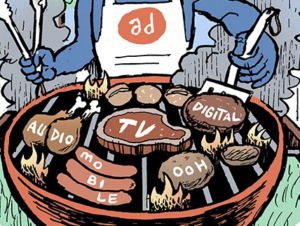“On TV and Video” is a column exploring opportunities and challenges in advanced TV and video.
Today’s column is written by Mike Bloxham, senior vice president of global media and entertainment at Magid.
With all the talk of the streaming wars and the arrival of services from the leviathans of the media business, it’s easy to assume that the next era of streaming will basically be defined by the increase in supply.
But while the entrance of Disney, AT&T/Warner Media, Comcast/NBC and Apple, among others, will undoubtedly be significant and potentially game-changing, it seems to me that we are already witnessing a shift in the streaming landscape that will characterize a more profound change than simply “more content, more choice.”
To date, the central premise of the streaming business has boiled down to, “We have great content that you can watch when you want, here’s the price, and here’s how you sign up.” All well and good, but as the streaming video landscape evolves, great content has begun to seem like oxygen: Vital for survival, but largely taken for granted. Who signs on to a service they don’t think has enough great content?
Content is a critical but expensive and volatile basis for maintaining a consistent – and winning – point of difference. Even the most successful shows have a shelf life.
Going forward, the marketing of streaming services will be routinely more sophisticated. And to address the very real issues of subscriber acquisition and churn, the propositions will be about much more than the content on your screen.
It’s what I call Streaming 2.0. And we’re already seeing it come to life.
Content Plus
Amazon is, of course, the longest-standing example of the Content Plus model of streaming. A huge proportion of Prime Video subscribers came to the service through their subscriptions to Amazon Prime for free order deliveries. And it’s a major part of what keeps people using Prime Video. Why would you drop the service if it means that shipping will cost more?
Now, as other services come on the scene, we are seeing familiar marketing tactics from the world of packaged goods being employed to add new dimensions to streaming propositions. These dimensions have little or nothing to do with the content being streamed but will add the kind of value that subscribers will prize just as highly – maybe more so in some cases.
Apple is offering a year’s free subscription to AppleTV Plus if you buy an Apple device. Disney has its deal with Verizon, and it’s been reported that HBO Max will launch with a similarly too-good-to-refuse offer for AT&T customers.
And we can expect much more of the same. One of the great advantages that the new entrants have is that they are part of something more than a streaming service. As a result, they can look across their footprint and draw down any number of offerings that will attract and retain customers.
Disney can easily tie subscription to deals on entrance, accommodation and much more at its theme parks (the Disney Plus Parks package?). The same goes for its cruise and vacations business, movie releases and merchandise. The entire world of Disney can be available to streaming subscribers on some kind of preferential basis – and probably will be, in some shape or form. And those are truly unique offers.
And let’s not forget Peacock from Comcast/NBC. With the link to the Universal Theme Parks and, of course, the cable business, there is no end to offers that can be made.
It’s all about retention
But while this sort of thing will become more and more common across the streaming landscape, don’t assume it’s just about getting people to sign up. It’s about keeping them there in an increasingly cluttered market that is characterized by subscriber churn.
This kind of promotional marketing gives users a reason to stick with a service even if they’re not watching many of the shows.
All these offers for off-air ancillary benefits, whether related to phones, electronics, theme parks, travel or anything else, are going to link streaming video to other elements of our lives – and the providers’ bottom lines – in a way we haven’t seen before.
In the world of Streaming 2.0, it will no longer only be about where subscribers look to find the best content. It will also be about what each service gives them off-screen and in real life. Content may continue to be king, but the array of subscriber benefits will be the power behind the throne.
Follow Magid (@Magid_TV) and AdExchanger (@adexchanger) on Twitter.














